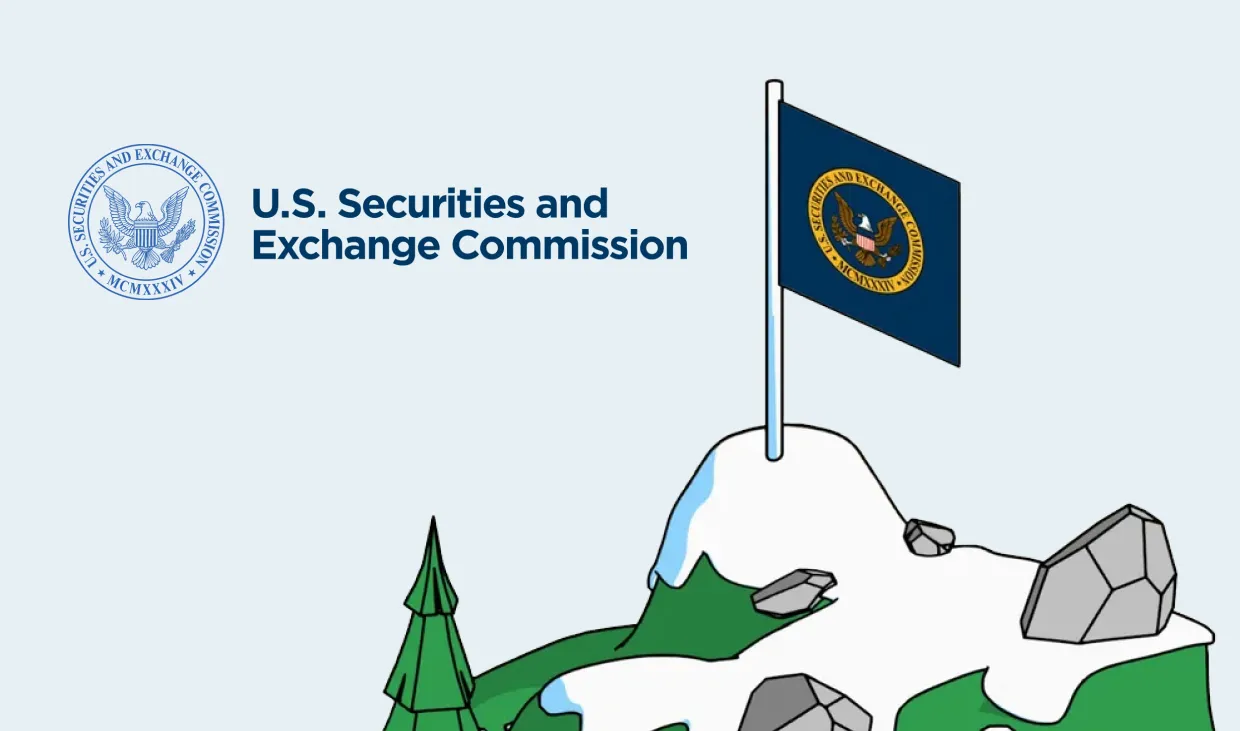What is the SEC?
The U.S. Securities and Exchange Commission (SEC) is an independent federal agency tasked with enforcing securities laws, protecting investors, and ensuring the fair and efficient operation of markets. Established in 1934 in response to the Great Depression, the SEC plays a crucial role in maintaining investor confidence by requiring public companies to provide accurate, consistent, and transparent information.
Over the years, the SEC has expanded its focus beyond traditional financial metrics to address broader issues that impact investor decision-making. This includes its regulatory role over securities exchanges, brokers, and dealers to ensure fair trading practices, enhance market transparency, and prevent fraudulent activities within the securities markets. Climate change, with its far-reaching economic, physical, and regulatory impacts, is now central to the SEC’s mandate to ensure transparency and accountability.
Climate change poses significant risks to businesses, from physical threats like extreme weather events to regulatory and market risks associated with the transition to a low-carbon economy. Burning fossil fuels plays a significant role in contributing to carbon dioxide emissions and climate change, highlighting the impact of human activities on the environment. These risks can directly impact a company’s financial performance, operations, and long-term viability.
The SEC recognizes that investors need reliable data to assess how companies are managing these risks. By integrating climate-related disclosures into its framework, the SEC ensures that businesses provide a complete picture of their exposure to climate risks and their strategies for managing them. This marks a critical step in aligning corporate reporting with the realities of a changing climate.
Understanding greenhouse gas emissions
Greenhouse gas emissions are a cornerstone of the climate change conversation, and understanding their origins and impacts is crucial for crafting effective mitigation strategies. Greenhouse gases, including carbon dioxide (CO2), methane (CH4), and nitrous oxide (N2O), trap heat in the Earth’s atmosphere, leading to global warming and subsequent climate change. Human activities, particularly the burning of fossil fuels like coal, oil, and natural gas, along with deforestation and land-use changes, have driven a significant rise in greenhouse gas emissions over the past century. This increase in emissions has intensified the greenhouse effect, resulting in more extreme weather patterns, rising sea levels, and other adverse environmental impacts. As businesses and regulators alike grapple with these challenges, understanding the sources and effects of greenhouse gases becomes ever more critical.
Understanding SEC climate disclosure requirements
The SEC’s climate disclosure rule, modeled on the Task Force on Climate-related Financial Disclosures (TCFD) framework, requires companies to include detailed climate-related information in registration statements and periodic filings, such as 10-K annual reports. These disclosures focus on:
Businesses must describe both physical and transition risks.
- Physical risks include the direct effects of climate change, such as extreme weather, rising sea levels, and temperature fluctuations.
- Transition risks involve regulatory changes, market shifts, technological advancements, and reputational concerns as the world transitions to a low-carbon economy.
Governance and oversight
Companies must disclose their governance structures for managing climate risks, including:
- Board oversight and involvement in climate-related decision-making.
- Management’s role in assessing and mitigating these risks.
Greenhouse gas emissions reporting
The SEC requires companies to disclose:
- Scope 1 emissions: Direct emissions from sources owned or controlled by the company, such as factory operations or company vehicles.
- Scope 2 emissions: Indirect emissions resulting from the purchase of electricity, steam, heat, or cooling.
Larger companies must obtain third-party assurance for these disclosures:
- Limited assurance for initial filings.
- Reasonable assurance after a transition period.
Smaller public companies are exempt from this requirement.
Financial statement impacts
Disclosures must include metrics related to the financial effects of climate-related risks, such as:
- Costs associated with severe weather events.
- Expenditures on climate risk mitigation.
- Revenue impacts linked to climate-related opportunities.
Reliable data on gas flaring is crucial for estimating CO2 emissions and understanding fossil fuel emissions.
Targets and transition plans
If a company has set climate-related goals or transition plans, it must disclose:
- Specific targets for emissions reduction.
- Progress toward achieving these goals.
- Use of scenario analysis to evaluate future climate impacts.
TCFD alignment
The SEC’s climate disclosure rules are modeled on the TCFD framework, which provides a globally recognized standard for climate-related financial disclosures. The TCFD framework emphasizes:
- Governance: How climate risks are managed at the board and management levels.
- Strategy: The actual and potential impacts of climate risks on a company’s business model, strategy, and financial planning.
- Risk management: Processes for identifying, assessing, and managing climate-related risks.
- Metrics and targets: Measurement of GHG emissions and tracking progress toward climate-related goals.
By aligning with the TCFD, the SEC ensures that its requirements are consistent with international best practices, enabling companies to streamline reporting across multiple jurisdictions.
Measuring emissions
Accurately measuring greenhouse gas emissions is a complex but essential task for businesses aiming to comply with SEC disclosure requirements. The process involves meticulous data collection, sophisticated modeling, and thorough analysis.
The SEC mandates that publicly traded companies disclose their greenhouse gas emissions and climate-related risks in their annual reports, ensuring transparency and accountability. To aid in this endeavor, the Intergovernmental Panel on Climate Change (IPCC) provides comprehensive guidelines for estimating emissions from various sources, including fossil fuel combustion, industrial processes, and land-use changes. These guidelines help companies develop precise and reliable emissions inventories, which are crucial for formulating effective climate change mitigation strategies. By adhering to these standards, businesses can not only meet regulatory requirements but also contribute to global efforts to combat climate change.
Why SEC disclosures matter
The SEC’s climate disclosure rules are not just a regulatory requirement; they represent a paradigm shift in corporate accountability within the historical context and regulatory framework of securities markets. Here’s why they matter:
Enhancing transparency
Investors demand consistent, comparable, and reliable data on climate risks. SEC disclosures empower investors to make informed decisions about the companies they invest in.
Driving investor confidence
Climate transparency builds trust with investors, particularly those prioritizing environmental, social, and governance (ESG) considerations. Proactive compliance demonstrates a company’s commitment to sustainability and long-term value creation.
Identifying inefficiencies
The process of measuring and reporting emissions often reveals operational inefficiencies, enabling companies to identify cost-saving opportunities while reducing their carbon footprint.
Managing reputational risk
Public scrutiny of corporate sustainability practices is growing. Transparent disclosures help safeguard a company’s reputation and demonstrate leadership in addressing climate change.
What businesses are covered by SEC disclosure?
The SEC’s climate disclosure requirements apply to:
- Publicly listed companies in the United States, including domestic and foreign registrants.
- Non-U.S. companies with shares traded on U.S. markets.
- Large private companies preparing for an IPO: Though not directly covered, these companies must demonstrate climate reporting readiness to attract investors.
When comparing the CO2 emissions of different nations over time, it is evident that the contributions of the United States differ significantly from those of other countries.
Small public companies have exemptions for certain requirements, such as Scope 1 and 2 emissions reporting, reflecting the SEC’s intention to ease the burden on smaller entities.
How can you prepare for SEC disclosure?
Preparing for SEC climate disclosures requires a strategic and methodical approach:
Step 1: Understand your emissions
Quantify Scope 1 and Scope 2 emissions using recognized standards such as the Greenhouse Gas Protocol. This involves:
- Identifying direct and indirect emissions sources.
- Collecting accurate and granular data.
Conduct a thorough assessment of physical and transition risks, considering:
- Vulnerabilities in operations and supply chains.
- Regulatory changes and market shifts.
- Potential reputational impacts.
Step 3: Establish governance practices
Ensure that climate-related risks are integrated into your corporate governance framework:
- Assign board-level responsibility for oversight of climate risks.
- Define management’s role in implementing risk mitigation strategies.
Step 4: Develop and disclose targets
Set measurable, time-bound emissions reduction targets. Provide transparent updates on progress and explain any adjustments to your strategy.
Step 5: Align with TCFD principles
Adopt the TCFD framework to structure your disclosures, ensuring consistency with global best practices.
Technology can simplify the complex task of SEC compliance. Carbon management platforms offer:
- Data collection and validation: Automated tools for collecting and verifying emissions data.
- Scenario analysis: Insights into potential climate-related risks and opportunities.
- Goal tracking: Tools for monitoring progress toward emissions reduction targets.
- Reporting and assurance: Support for preparing audit-ready disclosures.
By leveraging these platforms, businesses can streamline compliance, gain valuable insights, and focus on actionable steps for sustainability.
Final thoughts
The SEC’s climate disclosure requirements signal a new era of transparency and accountability. For businesses, compliance is both a challenge and an opportunity to demonstrate leadership in addressing climate change.
By preparing now, companies can align with investor expectations, build resilience to climate risks, and contribute to global sustainability goals. In doing so, they position themselves not just for regulatory compliance, but for long-term success in a rapidly changing world.




